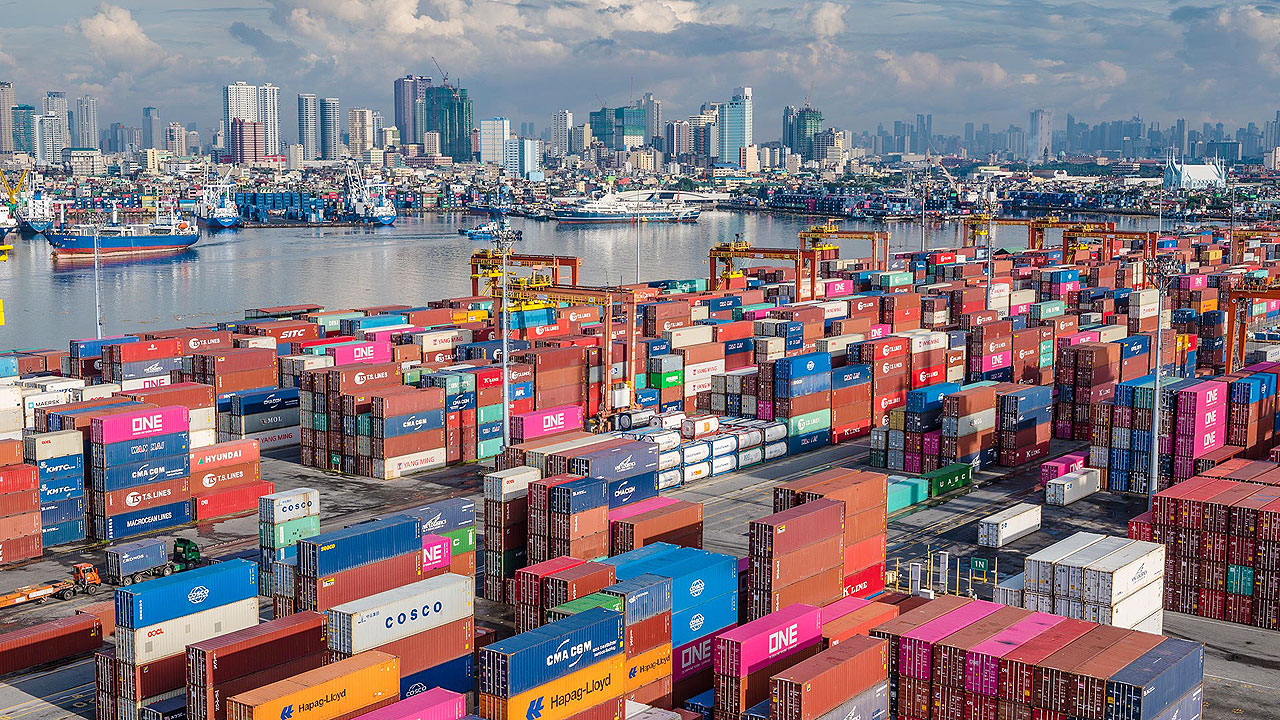
Upgrade to High-Speed Internet for only ₱1499/month!
Enjoy up to 100 Mbps fiber broadband, perfect for browsing, streaming, and gaming.
Visit Suniway.ph to learn
 ICTSI
ICTSITHE PHILIPPINES’ current account deficit (CAD) ballooned to $4.25 billion in the first quarter amid a larger trade gap, the central bank said.
Data from the Bangko Sentral ng Pilipinas (BSP) showed that the current account deficit surged by 105% to $4.25 billion in the first quarter from $2.07 billion in the same period a year ago.
This brought the CAD as a share of gross domestic product (GDP) to 3.7% in the January-to-March period, larger than the 1.9% in the same quarter in 2024.
“This development reflected the widening merchandise trade gap, as import spending grew faster than export earnings,” the BSP said in a statement dated June 13.
“The increase in the current account deficit also resulted from the contraction of net revenues from trade in services due to lower transport services receipts and increased outbound travel spending,” the central bank said.
However, this was partly tempered by higher remittances from overseas Filipino workers.
Cash remittances rose by 2.7% to $8.44 billion in the January-to-March period, while personal remittances went up by 2.7% to $9.4 billion in the first quarter.
The central bank expects the current account deficit — which covers transactions involving goods, services, and income — to reach $19.8 billion or -3.9% of economic output in 2025.
TRADE IN SERVICES
Data from the BSP showed net receipts from trade in services stood at $3.3 billion in the first quarter, down 9.3% from $3.7 billion in the same period last year.
This came as service exports slipped by 1.5% annually to $12.56 billion in the first quarter, while imports rose by 1.7% to $8.92 billion.
“The decline in receipts was mainly due to lower earnings from transport services (from $1.1 billion to $755 million), and technical, trade-related, and other business services (from $5.5 billion to $5.4 billion),” the BSP said.
Earnings from insurance and pension services dropped by 9.8% to $16 million, while those from construction fell by 25.7% to $14 million.
On the other hand, receipts from exports of telecommunications, computer and information services rose by 8.8% to $1.92 billion, manufacturing services on physical inputs owned by others went up by 0.6% to $980 million, and travel up by 0.2% to $2.89 million.
Earnings from exports of financial services went up by 72.6% to $128 million, personal, cultural, recreational services by 5.3% to $63 million, and charges for the use of intellectual property surged by 1,469.5% to $8 million.
Exports of technical, trade-related, and other business services as well as computer services include earnings from business process outsourcing (BPO)-related transactions.
The BSP estimated that BPO export revenues, including computer and other business services reached $7.2 billion in the first quarter, up 1.3% from $7.1 billion in the same period last year.
The services industry is a key growth driver of the Philippine economy.
Rizal Commercial Banking Corp. Chief Economist Michael L. Ricafort said the wider current account deficit “largely reflects the wider trade deficit/net imports” amid the uncertainty surrounding the US tariff policy.
Mr. Ricafort noted the Trump administration’s higher tariffs and trade wars could “slow down global trade, investments, employment, and overall world GDP growth.”
The US slapped the Philippines with a 17% reciprocal tariff, but this has been on hold until July. A 10% baseline tariff remains in effect.
“The widening of current account deficit was mainly driven by the persistent trade deficit, as merchandise imports continued to outpace exports despite modest growth in outbound shipments,” Philippine Institute for Development Studies Senior Research Fellow John Paolo R. Rivera said in a Viber message.
The country’s trade-in-goods deficit grew by 14.7% year on year to $16.8 billion in the first quarter from $14.7 billion, as the growth of imports outpaced exports.
However, analysts warned on the escalating attacks between Israel and Iran that could bring more uncertainty, particularly in global crude oil prices.
“Israel-Iran is a source of uncertainty in terms of volatility in global crude oil prices near 4-month highs, as the Philippines imports almost all of its oil,” Mr. Ricafort said.
In the coming months, Mr. Rivera said current account deficit will likely balloon in the short term, if oil prices remain high or if the peso weakens further and makes imports more expensive.
He noted steady growth in services receipts, remittances, and BPO revenues may help cushion the pressure.
“The trajectory will depend on external demand, import growth, and how global trade conditions including the evolving US-China dynamics play out. A wider deficit, if not offset by stable financing inflows like FDIs (foreign direct investments) or portfolio investments, could add strain on the PHP and forex (foreign exchange) reserves,” Mr. Rivera said.
Meanwhile, primary income rose to $1.5 billion in the first quarter, up 14.6% from $1.3 billion in the same period last year.
CAPITAL ACCOUNT
Meanwhile, the capital account posted a $23-million surplus in the first quarter, wider than the $17 million in the same period last year.
“The surplus was driven by gross disposals of non-produced nonfinancial assets amounting to $4 million, compared with $1-million gross acquisitions in Q1 2024,” the BSP said.
The financial account net inflows amounted to $6.7 billion in the first quarter, up 43.2% from the $4.6-billion net inflows in the same period a year earlier.
“This stemmed mainly from the notable increase in net inflows in the direct and other investment accounts, alongside sustained inflows in the portfolio investment account,” the central bank said.
In the January-to-March period, net inflows of direct investments surged by 179.5% to $1.8 billion.
For portfolio investments, net inflows inched up by 0.4% to $978 million in the first quarter.
Meanwhile, net inflows of other investments expanded by 31.1% to $3.9 billion in the first quarter.
On the other hand, the Philippines’ gross international reserves (GIR) reached $106.7 billion as of end-March 2025, higher than the $104.1-billion level in the same period a year ago.
“At this level, the reserves adequately covered 7.2 months’ worth of imports of goods and payments of services and primary income. It was also equivalent to 3.3 times the country’s short-term external debt based on residual maturity,” the central bank said.
The central bank noted that the GIR are foreign assets that are mostly in foreign-issued securities, gold, and foreign exchange. — ARAI



